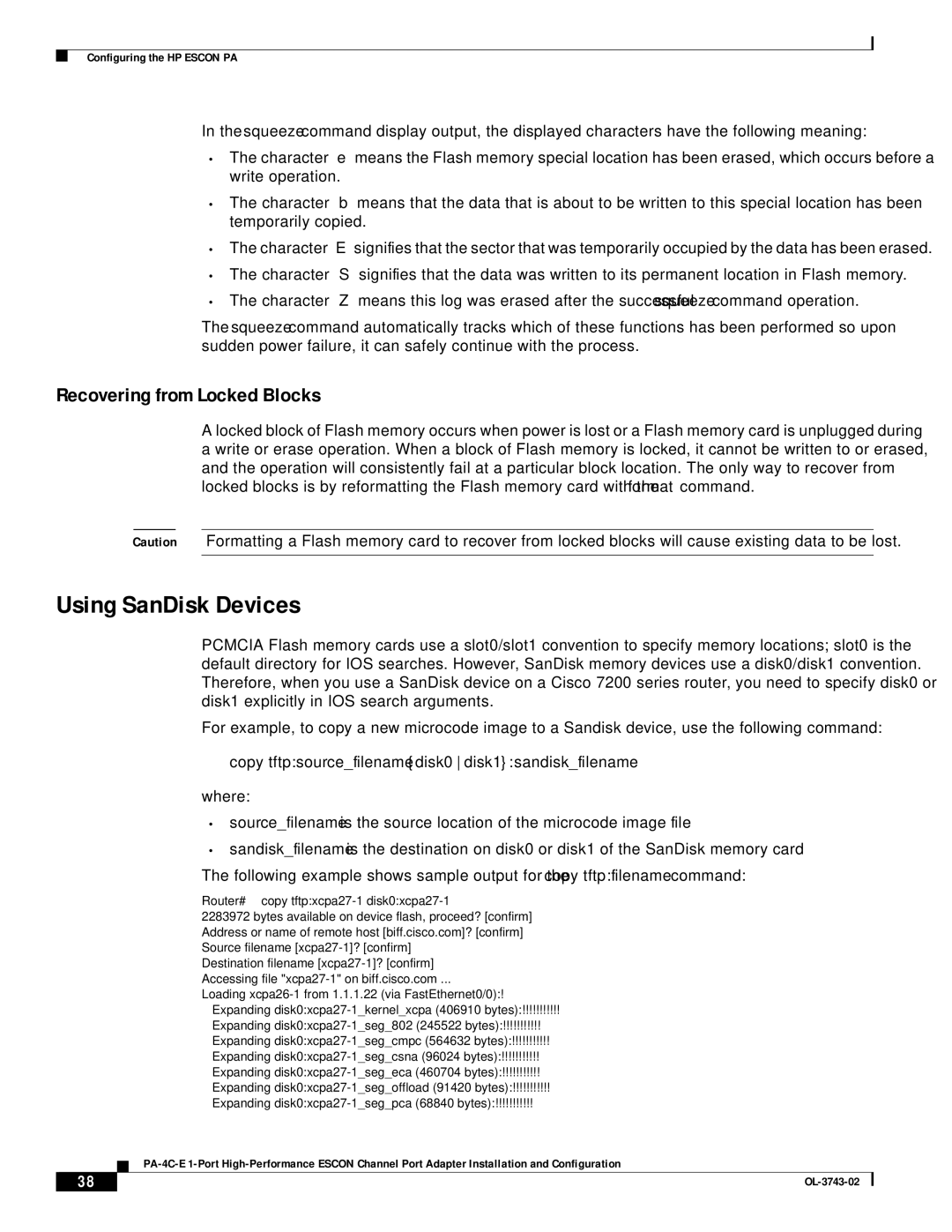
Configuring the HP ESCON PA
In the squeeze command display output, the displayed characters have the following meaning:
•The character “e” means the Flash memory special location has been erased, which occurs before a write operation.
•The character “b” means that the data that is about to be written to this special location has been temporarily copied.
•The character “E” signifies that the sector that was temporarily occupied by the data has been erased.
•The character “S” signifies that the data was written to its permanent location in Flash memory.
•The character “Z” means this log was erased after the successful squeeze command operation.
The squeeze command automatically tracks which of these functions has been performed so upon sudden power failure, it can safely continue with the process.
Recovering from Locked Blocks
A locked block of Flash memory occurs when power is lost or a Flash memory card is unplugged during a write or erase operation. When a block of Flash memory is locked, it cannot be written to or erased, and the operation will consistently fail at a particular block location. The only way to recover from locked blocks is by reformatting the Flash memory card with the format command.
Caution Formatting a Flash memory card to recover from locked blocks will cause existing data to be lost.
Using SanDisk Devices
PCMCIA Flash memory cards use a slot0/slot1 convention to specify memory locations; slot0 is the default directory for IOS searches. However, SanDisk memory devices use a disk0/disk1 convention. Therefore, when you use a SanDisk device on a Cisco 7200 series router, you need to specify disk0 or disk1 explicitly in IOS search arguments.
For example, to copy a new microcode image to a Sandisk device, use the following command:
copy tftp:source_filename {disk0 disk1}:sandisk_filename
where:
•source_filename is the source location of the microcode image file
•sandisk_filename is the destination on disk0 or disk1 of the SanDisk memory card The following example shows sample output for the copy tftp:filename command:
|
|
| Router# copy |
| |
|
|
| 2283972 bytes available on device flash, proceed? [confirm] | ||
|
|
| Address or name of remote host [biff.cisco.com]? [confirm] | ||
|
|
| Source filename | ||
|
|
| Destination filename | ||
|
|
| Accessing file | ||
|
|
| Loading | ||
|
|
| Expanding | ||
|
|
| Expanding | ||
|
|
| Expanding | ||
|
|
| Expanding | ||
|
|
| Expanding | ||
|
|
| Expanding | ||
|
|
| Expanding | ||
|
|
| |||
|
|
| |||
| 38 |
|
|
|
|
|
|
|
| ||
